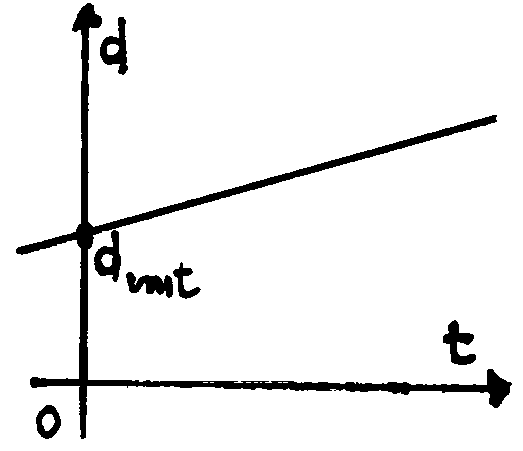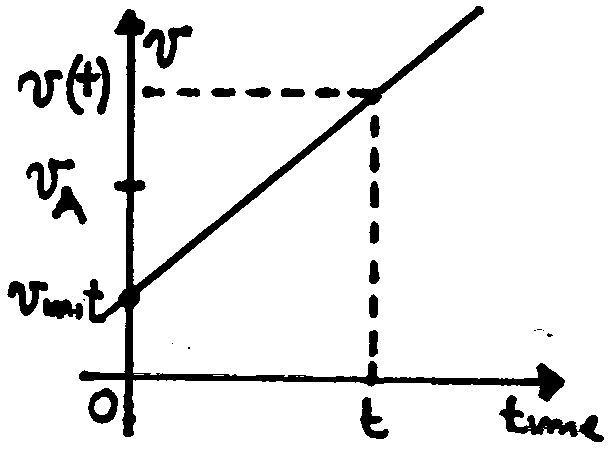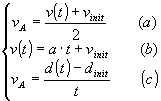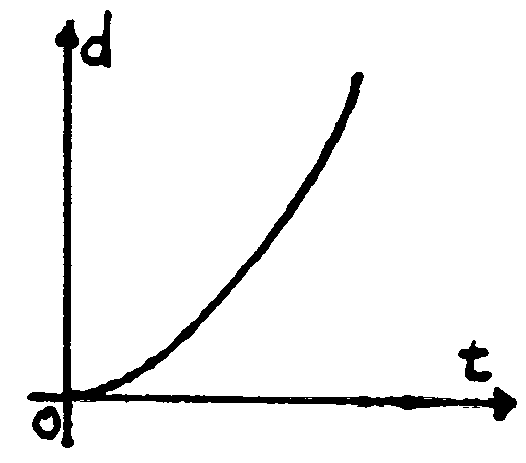![]()
(1)
![]()
(2)
The easiest examples of motion are the uniform velocity motion (constant velocity), and the uniform acceleration motion (constant acceleration). In these two cases itís easy to deduce the analytic laws which rule the motion, and a complete description of motion can be pointed out.
This is a motion during which the instantaneous velocity is always constant.
Hence acceleration is zero.
|
|
(1) |
|
|
(2) |
A constant velocity reveals that:
1)the direction of motion is along a straight line.
2)Average velocity and instantaneous velocity have the same magnitude
![]()
By coupling the last relationship with the definition of average velocity, we
can build the motion law for all the uniform velocity motions.

![]()
![]()
If ![]() then
then ![]() ,
and the last relationship can be written as
,
and the last relationship can be written as
|
|
(3) |
As this law shows, the distance versus time graph is a straight line and its
angular coefficient is the speed of motion ![]()
.
This is a motion during which the instantaneous acceleration is always constant.
|
|
(1) |
A constant acceleration reveals that:
1)the direction of motion is along a straight line.
2)Average acceleration and instantaneous acceleration have the same magnitude:
![]()
By coupling the last relationship with the definition of average acceleration,
we can build the velocity law for a uniform acceleration motion

![]()
![]()
If ![]() then
then ![]() ,
and the last one can be written as
,
and the last one can be written as
|
|
(2) |
The velocity versus time graph is a straight line and its angular coefficient
is the motionís acceleration ![]() .
.

From this graph the relationship between the average velocity and the
instantaneous velocity can be deduced. It follows from the idea of a segmentís
average point:
![]()
By coupling this with the previous equation (2) and with the definition of
average speed, we have a three equation system. Its solution represents the law
of motion for uniform acceleration motion:

By inserting the (b) into the (a) we have:
![]()
and by inserting the (c) into the last one:
![]()
that leads to:
|
|
(3) |
The graph of this motion law is a branch of a parabola. For instance, if the
initial distance ![]() and the initial velocity
and the initial velocity ![]() are
equal to zero, the diagram is similar to the following one:
are
equal to zero, the diagram is similar to the following one:

The parabolic behaviour is strictly related to the square dependence on time.